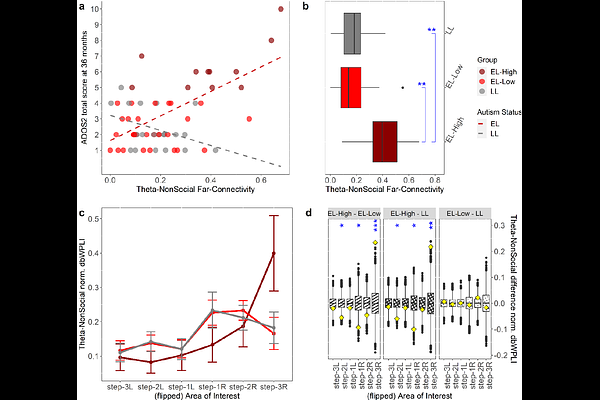Functional connectivity in infants' visual cortex: Links to motion processing and autism

Functional connectivity in infants' visual cortex: Links to motion processing and autism
Hardiansyah, I.; Bussu, G.; Bolte, S.; Jones, E. J. H.; Falck-Ytter, T.
AbstractIn a previously published study, we found atypical visual cortical laterality patterns during global motion perception in 5-month-old infants who showed high levels of autistic symptoms in toddlerhood. Here, using data from a separate experiment, we examined whether these results could reflect altered visual cortical functional connectivity in theta, alpha, and gamma rhythms. We assessed this in a sample of 5-month- old infants (n = 59; 39 elevated familial likelihood of autism) by means of electroencephalography (EEG) when they were watching videos showing social and non-social scenes. Gamma connectivity between midline and far-lateral visual cortex when viewing social scenes was linked to both later autism symptoms and global motion visual cortical laterality we reported in the previous study. This may indicate a shared integrative mechanism underlying social perception and global motion processing. Further, we found that higher midline-to-lateral theta connectivity in the visual cortex when perceiving non-social scenes in infancy was strongly associated with having more autistic symptoms at follow up, but uncorrelated with concurrent motion perception. Our study points to atypical functional connectivity in the visual cortex as a potential early marker of autistic symptoms and highlights a probable link between motion processing and social perception.